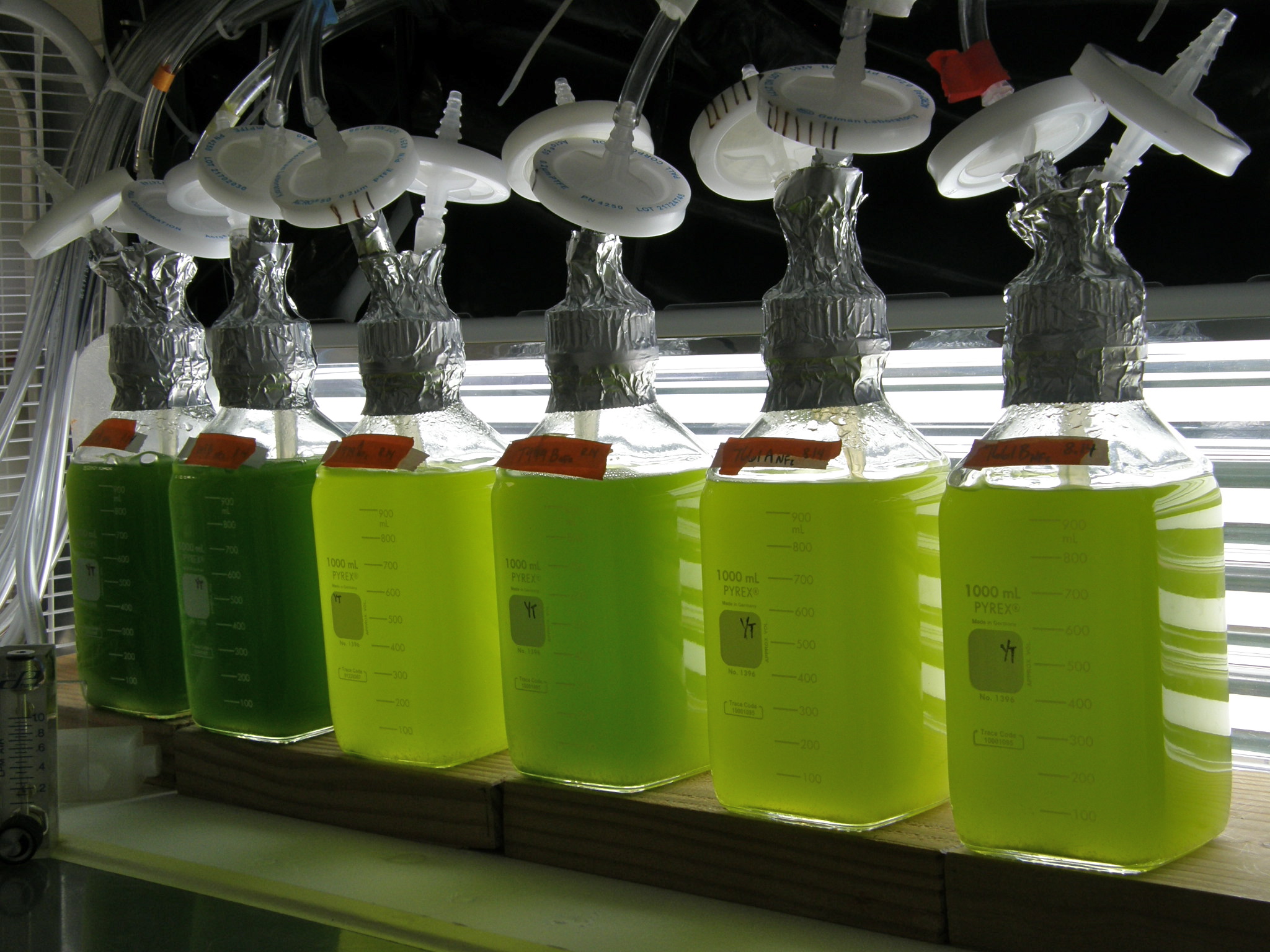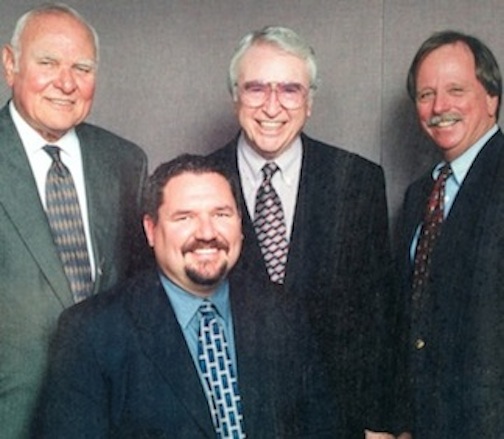Daily Business Report-Dec. 2, 2014
Last year, California’s life science industry created almost $259 billion in economic activity for the state. Biofuels will be one of the focuses of the Pacific Rim Summit.
Pacific Rim Summit to Highlight Growth
In Biofuels and Biorenewables Sector
Executives and investors from the biofuels, specialty enzyme, renewable chemicals, algae and agriculture industries will come together at BIO’s ninth annual Pacific Rim Summit on Industrial Biotechnology and Bioenergy on Dec. 7-9 in San Diego, to discuss future industry growth and partnerships.
Last year, California’s life science industry created almost $259 billion in economic activity for the state. The biorenewables sector was instrumental in generating this growth, creating high-paying jobs and attractive economic opportunities for investors.
“California’s flourishing industrial biotech sector makes the region an ideal location to hold discussions about the future of the biobased industry,” said Brent Erickson, executive vice president for BIO’s Industrial & Environmental Section. “With new startups and strong academic research programs, the industrial biotechnology sector has become an economic driver for the state.”
In evaluating the economic impact of biotechnology in California, BayBio and Biocom found that the biorenewables industry in Northern California generated almost $1.8 billion in regional economic activity and supported almost 5,600 total jobs in 2013. The average wages in the sector exceed $40,000 per year across the region. In Southern California, the sector supported over 12,700 jobs and generated nearly $3 billion in economic activity. The average wages in the sector exceed $56,000 per year across the region.
“The return of this summit to San Diego is fitting given the large players in the space who are driving biorenewables in the region,” said Joe Panetta, president and CEO of Biocom. “There is something to be said about the innovation taking place in San Diego that draws companies here for industry meetings, networking and collaboration.”
The summit will be held at the Westin Gaslamp Quarter in Downtown San Diego.
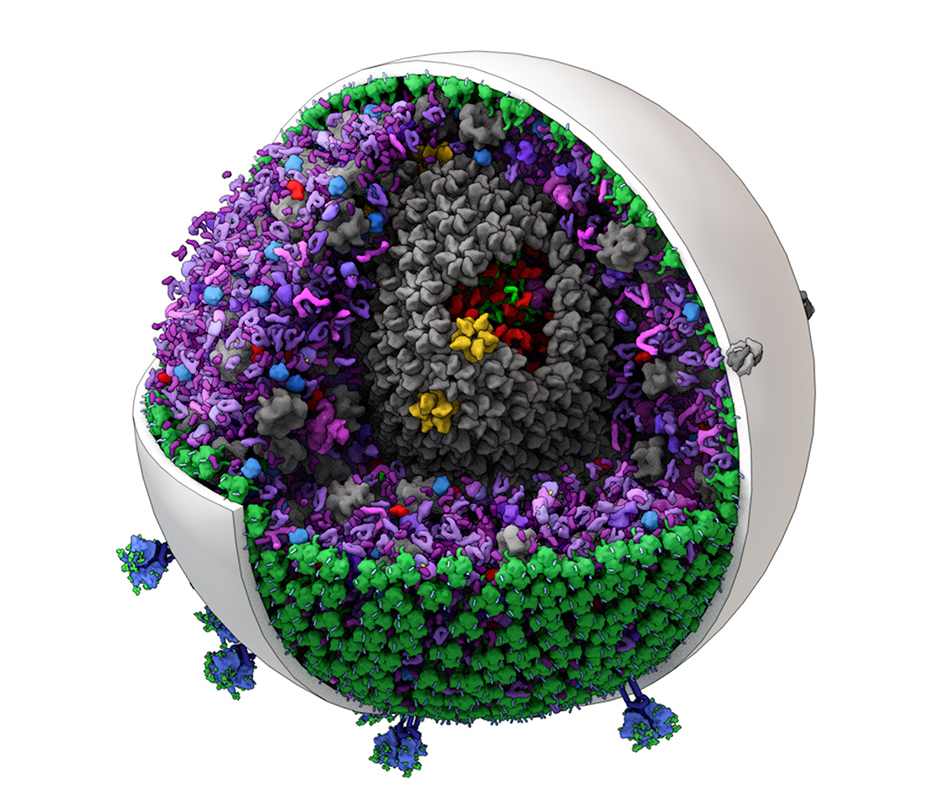
Scientists Create New Tool
For Exploring Cells in 3D
Researchers can now explore viruses, bacteria and components of the human body in more detail than ever before with software developed at The Scripps Research Institute (TSRI).
In a study published online ahead of print Dec.1 by the journal Nature Methods, the researchers demonstrated how the software, called cellPACK, can be used to model viruses such as HIV.
“We hope to ultimately increase scientists’ ability to target any disease,” said Art Olson, professor and Anderson Research Chair at TSRI who is senior author of the new study.
The cellPACK software solves a major problem in structural biology. Although scientists have developed techniques to study relatively large structures, such as cells, and very small structures, such as proteins, it has been harder to visualize structures in the medium “mesoscale” range.
With cellPACK, researchers can quickly and efficiently process the data they’ve collected on smaller structures to assemble models in this mid-size range. Previously, researchers had to create these models by hand, which took weeks or months compared with just hours in cellPACK.
As a demonstration of the software’s power, the authors of the new study created a model of HIV showing how outer “spike” proteins are distributed on the surface of the immature virus.
The new model put to the test a conclusion made by HIV researchers from super-resolution microscopic studies — that the distribution of the spike proteins on the surface of the immature virus is random. But by using cellPACK to generate thousands of models, testing alternative hypotheses, the researchers found that the distribution was not random. “We demonstrated that their interpretation of the distribution did not match that hypothesis,” said Olson.

San Diego Products Named
Life Sciences Innovations of 2014
Four gene-sequencing products and a liver model from San Diego biotechnology companies were named among the top 10 life sciences innovations of 2014 by The Scientist magazine.

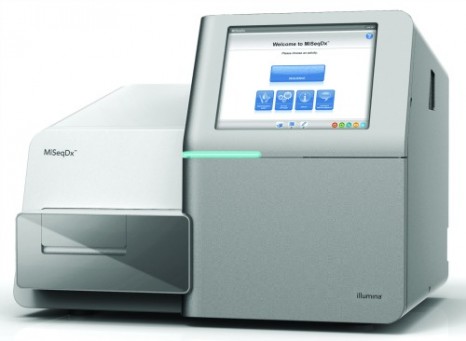
La Jolla-based Edico Genome‘s DRAGEN Bio-IT Processor led the list in the Canadian magazine’s December issue. The processor is a card that fits into a standard personal computer and reduces the computational time required for analyzing a whole human genome from 24 hours to 18 minutes.
BioNano Genomics’ IrysChip V2 and two gene-sequencing systems from Illumina Corp., MiSeqDx and HiSeq X Ten, were also listed in the article in the magazine. Both companies are based in the University City area.
The fifth product named is the exVive3D model of human liver tissue developed by Organovo Holdings Inc. in Sorrento Valley. The model can be used in drug discovery.
“We are excited that the IrysChip V2 was not only named to The Scientist’s Top 10 Innovations of 2014 but also recognized in the top five along with other revolutionary genomics technologies,” said Erik Holmlin, president and CEO of BioNano. “Today, researchers can use the Irys System to discover biologically significant patterns in structural variations, which can be relevant for developing new drugs and diagnostics as well as for creating new agriculture and biofuel products.”
The article noted that one of Illumina’s sequencers “achieves the long-awaited $1,000 human genome milestone” and praised Organovo and Edico Genome for “novel products that caught the eyes of our independent, expert judges.”
— Times of San Diego
Alzheimer’s ‘Reaching Epic Proportions’
The San Diego County Board of Supervisors today will consider taking a regional approach to address Alzheimer’s disease, which is now the third leading cause of death in the area.
The supervisors will vote on a series of recommendations issued by a group of local elected officials, researchers, caregivers and other experts. Their suggestions include:
• Launching a San Diego-based fundraising campaign to spur innovation and drug discovery.
• Developing countywide standards for the screening, diagnosis and management of Alzheimer’s and other dementia conditions.
• Increasing awareness of and recruiting more volunteers for clinical trials;
exploring the creation of a regional registry that would connect patients and physicians with researchers.
• Enhancing training for those who work with Alzheimer’s patients;
expanding services, respite care and support for families.
• Improving the Sheriff’s Department’s “Take Me Home” program to increase access of GPS devices to reduce wandering by patients.
If approved by the supervisors, the experts who came up with the recommendations would have three months to bring an implementation plan back to the board.
In a letter to their colleagues, Supervisors Dianne Jacob and Dave Roberts wrote that Alzheimer’s is “reaching epidemic proportions” in the county, with an estimated 60,000 residents living with the disease. The condition is taking a toll on families and healthcare providers and is only expected to get worse, they said.
— City News Service
County Residents Reappointed to
Regional Water Quality Control Board
Gov. Jerry Brown has reappointed Gary Strawn, 68, of Santee, and Tomas Morales, 51, of San Diego, to the San Diego Regional Water Quality Control Board.
Strawn has served on the board sincesince 2010. He was an engineering consultant at Gary Strawn Consulting from 2007 to 2012 and a program manager at United Technologies Hamilton Sundstrand from 1988 to 2006. He served as an officer in the U.S. Navy from 1968 to 1988.
Morales has served on the board since 2011. He has been principal at Morales Legal since 2012. He was partner at Golub and Morales LLP from 2004 to 2011 and an attorney at Thorsnes, Bartolotta, McGuire from 2000 to 2004. Morales was a partner at Strong and Morales APC from 1994 to 2000 and an associate at Aguirre and Eckmann from 1993 to 1994, at Sanger and Associates from 1992 to 1993, at Hatch and Parent from 1990 to 1992 and at Lillick and McHorse from 1988 to 1989..
The positions require Senate confirmation and the compensation is $100 per diem. Strawn is registered without party preference. Morales is registered as Democrat.
Landscape Architects Chapter to Present
Award to County Supervisor Ron Roberts
The San Diego chapter of the American Society of Landscape Architects will hold a special event on Thursday to present the new ASLA San Diego Stewardship Award to county Supervisor Ron Roberts and to launch the chapter’s first Student Design Awards and Exposition. The event will be at 6 p.m. at the San Diego Central Library, 330 Park Blvd.
Roberts has been supervising and managing urban and natural resources in a responsible manner during his professional career, and was the driving force behind the new 16-acre waterfront park, the chapter noted in announcing the award. He is currently working on a cable car that would connect the foot of Sixth Avenue with Balboa Park, achieving John Nolen’s dream of a bay to park link.
The Student Design Awards and Exposition will highlight and acknowledge the hard work and skill of the students in the local community college landscape architecture programs at San Diego Mesa College, and Southwestern Community College, who have programs in landscape architecture taught by award-winning professionals. The college programs are structured to build skills and provide training in landscape architecture.
Mayor Proposes Permanent Homeless Shelter
Two temporary tents that have sheltered San Diego’s homeless since the 1990s would be replaced by one permanent building under a proposal Mayor Kevin Faulconer plans to unveil today, U-T San Diego reports. Faulconer said boosting shelter quality fits well with the city’s greater focus this year on providing more counseling and a wider range of permanent housing solutions for the city’s large homeless population.
In addition to planning for a new shelter facility, city officials have also focused more this year on case management within the shelters and enacting a new policy of assigning scarce shelter beds based on need instead of by lottery.
“Providing a more welcoming environment is the next step,” said Faulconer, suggesting the permanent shelter could open in July. “Having a permanent solution with permanent help is going to make a real difference.”
Three leading candidates to run a new permanent shelter — Father Joe’s Villages, the Alpha Project and People Assisting the Homeless — told U-T San Diego on Monday that it would be difficult to find a building capable of housing 350 beds.
Gloria Might Lose Top Council Spot
Council President Todd Gloria must leave the Council in 2016 due to term limits, and it’s not clear if he’ll run for mayor, Congress or the state Legislature. The media’s paid close attention to him during (and since) the Filner imbroglio, and lately he and and Mayor Kevin Faulconer have tried to create a sense of political unity by appearing at political events together.
But now NBC 7’s Wendy Fry writes that “there is definitely a behind-the-scenes campaign to have Councilwoman Sherri Lightner take over the presiding position on the council,” citing unnamed sources close to Council members.
Such a move would take Gloria out of the spotlight as he tries to figure out what to do with his closely watched political career. The news, by the way, came on Lightner’s birthday.
— Voice of San Diego
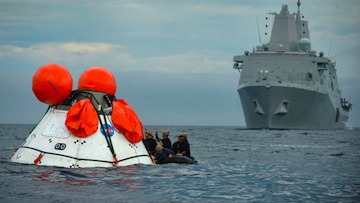
USS Anchorage Departs on
Spacecraft Recovery Mission
The San Antonio-class amphibious transport dock ship USS Anchorage left Naval Base San Diego Monday on a mission to retrieve NASA’s new Orion spacecraft after it’s first test flight.
The Orion, which is designed for flights beyond Earth orbit, is scheduled to be launched Thursday morning atop a Delta IV Heavy rocket, currently the largest in the world. During the four-hour flight the Orion will orbit twice and then re-enter the atmosphere at 20,000 miles per hour to test its heat shield.
Anchorage will use its amphibious capabilities to conduct an at-sea recovery of the Orion space capsule.
“It is a very complex, highly-integrated team of Navy divers, meteorologists, flight crews, the well-deck personnel and the bridge watch standers on Anchorage,” said Lt. Keith Tate, operations officer. “All of this will hopefully culminate with the historic capsule recovery, which is something the Navy hasn’t been involved with for almost 40 years.”
The launch window for this NASA mission terminates Dec. 19.
The Orion is being designed to carry a crew of four astronauts on long-duration missions to an asteroid, the Moon or Mars.
The unmanned test next week will use the largest rocket currently available, but future manned flights will use NASA’s giant Space Launch System
currently under development.
— Times of San Diego
Women’s Empowerment International
Reaches $1 Million Fundraising Mark
Women’s Empowerment International (WE), a local, all-volunteer nonprofit organization that provides micro-loans and business startup and expansion help to poor women, reports that it has just reached its $1 million fundraising mark.
“It is inspiring and gratifying to see how impoverished women flourish when provided access to business capital,” said Carol Clause, president of WE. “WE’s goal for the next decade is to markedly accelerate its fundraising goals so many, many more women can move beyond poverty.”
Locally run and founded 11 years ago, WE partners with banks for the poor and funds small loans and services to needy women so they can start businesses and begin to work their way out of poverty. A pig, a bike, a sewing machine is sometimes all that is needed to help raise a family out of poverty.
Clause said that by year’s end, WE will have funded well over 20,000 small business loans for deserving women in Honduras, Mexico, Benin, Ghana and Uganda. In addition, the WE Center for STAR Women in City Heights has helped San Diego’s poor women to start 216 businesses.
Pulse Electronics Corp. Names CEO
Mark Twaalfhoven has been appointed chief executive officer of Pulse Electronics Corp. of San Diego. Twaalfhoven also was appointed to the company’s board of directors. John E. Major has been named permanent chairman of the board. Alan H. Benjamin, who has served as interim CEO since July 2014, will continue.
Twaalfhoven joins Pulse from the investment firm Valuec B.V. in Hong Kong, where he served as president, with responsibilities for investing in and advising international technology companies.

